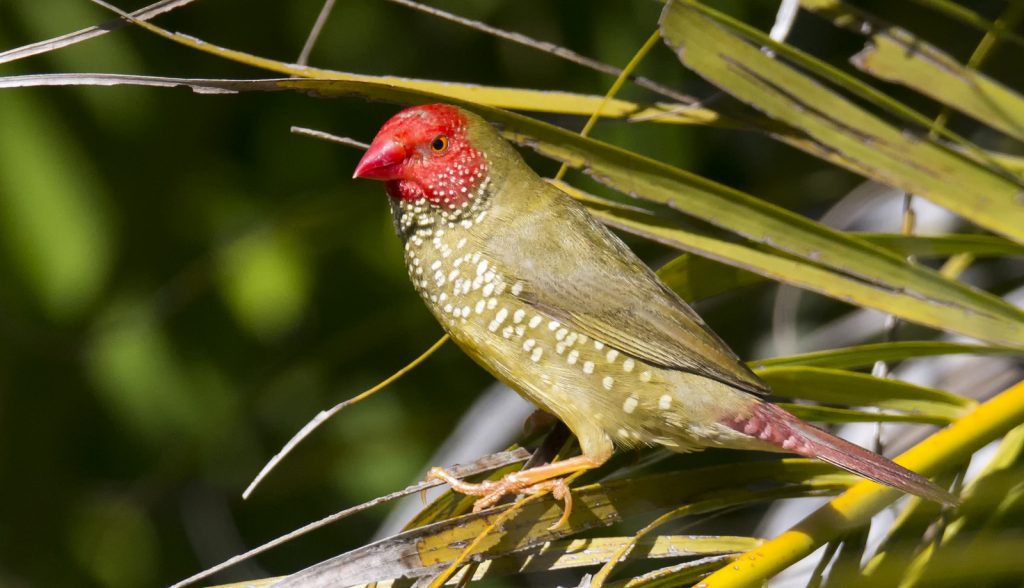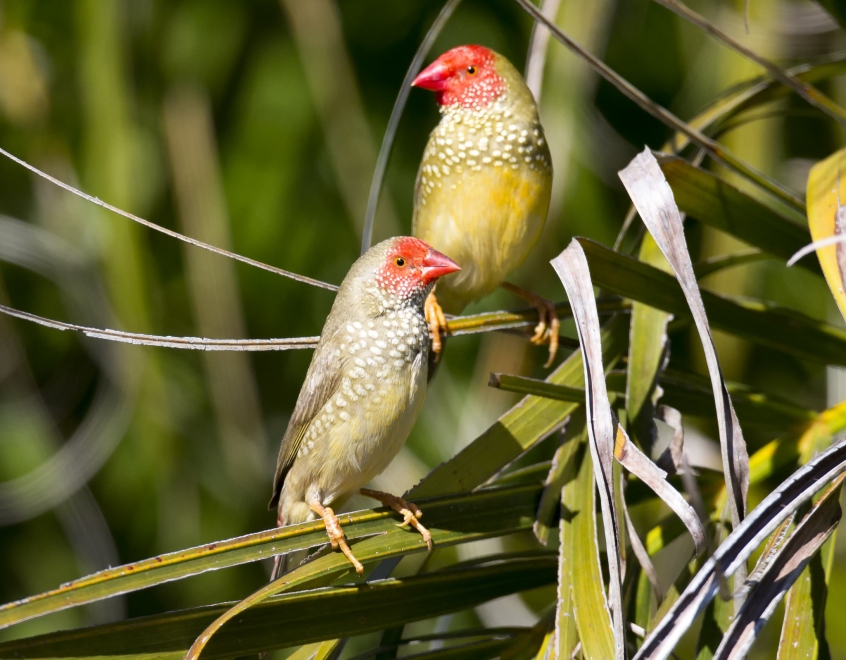The Star Finch is a small estrildid finch found in dry grassland and savannah habitats in the northernmost parts of Australia. They are commonly kept as an aviary bird and are reputed to be easy to take care of and breed. Numerous mutations have been established, including fawn, cinnamon and yellow-body.

Housing & Compatibility
Star finches cohabitate comfortably with most placid finch species. Best breeding results are achieved in single pair aviaries, but they will also readily breed in a colony or mixed collection.
The Star Finch’s natural habitat is dry grassland and savannas, conditions that should be emulated in the aviary. The best aviaries are large, lightly planted, have a permanently dry floor (sand is preferred) and access to plenty of natural sunlight. Star Finches can be destructive to foliage, especially when in large groups.
Breeding Star Finches
The Star finch will readily breed in an aviary environment, with few requirements beyond seed and water. Breeding typically occurs in spring and late autumn.
They build nests in both dense shrubs and commercial wicker nest cups. The nest is constructed from tightly woven lengths of fine grass and small white feathers.
Best breeding results are achieved when housed in single pair aviaries or small colonies of three or more pairs of Star Finches.
A clutch typically consists of 3-6 eggs, which are incubated by both parents. The eggs usually take 14-16 days to hatch, with young fledging three weeks later.
Sexing
Star finches can be difficult to sex. Males are identified by a larger and brighter red mask when compared to the hen. The males spots and general body colour are more vivid than the female’s. Only the males will sing.
Mutations
Mutation star finches are extremely well established. It’s become extremely difficult to source birds that do not carry one or more mutation genes.
Yellow-headed star finches are the most common mutation. As the name suggests, this mutation sees the finch’s red head feathers replaced with yellow feathers.
Other mutations include pied, fawn, cinnamon, and “yellow bodied”; which sees the normal yellow/grey body feathers turn vividly yellow.

Diet & Feeding
Seed forms the basis of most finch diets. Unfortunately seed is lacking in many essential vitamins and minerals which must be compensated for by introducing other foods. Green seed heads or sprouted seed increases the nutritional value of seed and is a cheap way to improve your birds health.
Green seeding grasses and leafy vegetables form an important part of the Star finches’ diet. Spinach can also be given, but only sparingly as it can contribute to calcium deficiency.
Commercial soft finch food mixes can also be provided for an added nutrient boost, particularly when breeding. Some birds will consume insects for extra nutrients, but they are not an essential part of their diet.
Do not feed anything from the list of forbidden foods.
Health
Star finches are exceptionally hardy and tolerate a wide range of different conditions. Although they spend less time on the ground compared to other Australian finches, a strict worming regimen is still essential to maintain good health.
A health Star finch can be expected to live for approximately 8 years.